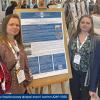Feed aggregator
Building Trustworthy Software with AI: The Generate-and-Check Paradigm
Whether it be designing products and creative content or software engineering, artificial intelligence is steadily changing how we engineer and interact with technology. But although AI can speed up the development process, the real price of the measure lies in trusting its output, particularly when dealing with safety-critical applications. How can AI-generated software be ensured to be correct, secure, and efficient within real-world parameters?
Bosch Research recognizes the immense promise of the generation-and-execution approach in driving innovation and practical impact. This synthesis combines generative AI to suggest solutions and systematic checks to enforce correctness, safety, and performance. Balancing AI creativity occurs with a touch of strictness-a balance that lands well upon software engineering.
How Generate-and-Check Works
Think of solving a crossword puzzle: you may try out different words, but each suggestion is validated against the length of the clue and the letters already in place. Similarly, in software engineering, AI can generate new code or refactor existing code, while automated checks verify compliance with rules and desired outcomes.
Those rules can be either very simple like the coding style enforcement or highly advanced, like formal verification of software properties. From this perspective, rather than verifying every possible system state, safety, correctness, and adherence to requirements are ensured by verifying AI proposals.
Less error-prone AI assistance, and much less reliance on human supervision all the time.
Use Case 1: Smarter Code Refactoring
Refactoring is a perfect application for generate-and-check. The AI proposes improvements, e.g., migrating to more efficient frameworks, while automated checks verify the equivalence of the new version with the old code.
This approach is somewhat different from the traditional ones based mostly on unit tests as it guarantees behavioral invariance, i.e., that the refactored code behaves exactly the same but better in terms of maintainability or efficiency. Tools developed at Bosch Research allow you to profile this too, to make sure that performance has stayed the same or improved after the changes have been made.
Use Case 2: Reliable Software Translation
On the other hand, software translation remains an area where AI excels but demands human monitoring. The idea of translating legacy code into a safer or new-age language seems nice, but oftentimes traditional transpilers would fail in preserving the idiomatic essence of the target environment.
Yet with generate-and-check, AIs can translate idiomatically while automated tools check for functional correctness, safety, security, and performance. This finally offers a chance to modernize codebases in great bulk without stealthily inserting vulnerabilities.
Embedding into the Developer Workflow
AI becomes valuable for developers if their tools support integration with existing toolchains. Generate-and-check would appear in various forms:
IDE plugins for quick, low-latency assistance during coding.
Background workflows for longer tasks, such as legacy migration, where AI proposals can be rolled out as pull requests. Each PR can provide evidence, such as performance metrics or validation checks, preserving developers’ agency albeit under automated rigor.
This guarantees that AI will continue to be an aid rather than a substitute, offering reliable recommendations while developers make the ultimate choices.
Looking Forward:
The generate-and-check paradigm is a mentality shift for trustworthy AI in software engineering, not merely a technical approach. AI offers safer, better, and more efficient software development by combining its generating capacity with reliable verification.
(This article has been adapted and modified from content on Bosch.)
The post Building Trustworthy Software with AI: The Generate-and-Check Paradigm appeared first on ELE Times.
Unusual quartz crystals
 | Here’s a pair of 99.9985 kHz crystals from an HP3571A spectrum analyzer. They were used in a 5-stage filter that set the IF bandwidth, and are simply gold-plated flat quartz plates with centered contacts on both sides, packaged like vacuum tubes. Manufactured by Northern Engineering Laboratories, Burlington WI [link] [comments] |
Пам'яті Сергія Ігоровича Сікорського
Нещодавно у США не стало Сергія Ігоровича Сікорського — віцепрезидента зі спеціальних проєктів Sikorsky Aircraft, сина всесвітньо відомого авіаконструктора Ігоря Сікорського, на честь якого названий наш університет.
Armstrong’s Method of FM Generation
My Homemade Electromagnetic Accelerator Project
 | Hi everyone!, after 10 months of working and improving on my accelerator, its finally complete! This device accelerates a magnet in circles using 4 electromagnets and hall effect sensors (I've tried IR sensors but failed😔). Those sensors detect the magnet and then a N-MOSFET switches the coil on and off at the right moment, which leads to acceleration of the magnet. I've also used a 12v--> 5v voltage regulator and for one reason or another I've put a quick ignition and fire hazard or whatever you call it on the voltage regulator. If you wanna know more, or just wanna see the accelerator in action you find the youtube video at the KIWIvolt youtube channel. I'm thinking to make a part 2 in which the magnet is a sphere and thinking of replacing the breadboard with a PCB. If you have any other ideas or wishes please let me know so i can adjust it, to perfect my accelerator even further. [link] [comments] |
Keyboard upgrade from USB to BLE with an ESP32
 | submitted by /u/avionic_Railcar [link] [comments] |
I made a counter with a 8-stage serial shift register
 | So i used HEF4094BP, i did the same circuit in this video 4094 shift register long time ago, then in 2022 i bought raspberry pi pico, and in this year i write a long code with MicroPython to count from 1 to 9 and repeat the loop, but i need to optimise it next time. [link] [comments] |
3D Magnetometer Project.
 | Over the last few weeks I’ve worked on an Arduino board connected through an ADC converter into 3 magnetometers. They are set orthogonally to one another (around the clear box) so that the magnetic field strength and direction at a given point can be found. The whole lot gets power through a USB cable that allows you to model the direction and strength in python. It’s been an absolute blast building it :) [link] [comments] |
Weekly discussion, complaint, and rant thread
Open to anything, including discussions, complaints, and rants.
Sub rules do not apply, so don't bother reporting incivility, off-topic, or spam.
Reddit-wide rules do apply.
To see the newest posts, sort the comments by "new" (instead of "best" or "top").
[link] [comments]
About 50 years of evolution in electrolytic capacitors
 | Left: 1974 (Matsushita Electric) Right: 2021 (Rubycon) Both 16V 1,000μF. Same voltage rating and capacitance, but shrunk this much in about 50 years. [link] [comments] |
DIY Precision Scale – 0.0001 g / 0.1 mg
 | For a biochemical project of mine I needed a very precise scale. The ones I bought were underwhelming, so I decided to just solder one myself. The sensitivity is kind of ridiculous. Sitting near the scale, I can see my heartbeat in the signal when streamed to a PC. Someone walking on a different floor makes the reading jump — and I live in a concrete building. The coil can lift about 20 g. With different coils, you could trade off dynamic range vs. precision. For my purposes, the precision is already overkill. Components were about $100 total. The most expensive part was the neodymium magnet. The principle is electromagnetic force restoration. A 110 Ω coil suspended on a lever lever sits above a neodymium ring magnet. The lever height is held constant by a feedback loop that uses an IR photointerrupter. The current required to hold the weight is directly proportional to the mass. For current sensing I used a 10 Ω shunt resistor (RJ711, 5 ppm/°C TCR) and a 24-bit ADC (ADS1232). The signal is read by an Arduino Nano and displayed on a small LCD (SLC0801B). The photointerrupter is built from a generic IR LED and IR photodiode. The LED is driven with a constant current source (using a 2N7000 MOSFET), while the photodiode is reverse-biased for fast response. The circuit runs from a low-drift 2.0 V reference (REF5020), which provides a stable reference for the ADC. After dividing it to 0.5 V, it also biases the photodiode stage and provides the ADC’s negative input. The coil current is controlled with an N-channel power MOSFET (IRF540N) acting as a low-side driver, operated in its ohmic region. Its gate is driven by the photointerrupter circuit. Zero-drift op-amps (OPA187) buffer the reference voltages, drive the photointerrupter, and control the coil current. I also added a capacitive touch button for tare, so you don’t have to touch the scale directly — that’s surprisingly important at this sensitivity. The schematic looks a bit op-amp heavy, but it’s actually pretty straightforward. Challenges and possible improvements - The lever tends to oscillate, so the feedback loop has to be very fast. A lighter lever with a higher resonant frequency would help, and might require a lower-gate-capacitance MOSFET. - All components in the feedback path need low temperature coefficients to minimize drift. - To fully eliminate drift, one would need to monitor and compensate for coil temperature, photointerrupter temperature, as well as ambient air temperature, humidity, and pressure (for buoyancy effects). - A parallel guide system will eventually be needed so measurements are independent of where the weight is placed on the lever. This build definitely requires some electronics background, so it’s not a first-project type of thing. But if you’re comfortable with soldering and op-amps, it’s very doable. Hope you like it 🙂 [link] [comments] |
Brain fart moment
 | This was a brain fart moment upon finding out they were .25 watt, we needed 9 watt capable. This is a lovely bundle of 36 that has next to no resistance now 🤦 .... 20ohm [link] [comments] |
Casually upgrading new iphone 17 to 1tb
 | Miss the old micro SD upgrade days [link] [comments] |
Athena - First time designing a flight controller with a triple MCU architecture
 | I've had an obsession with rockets/flight controllers and decided to make an open source flight controller from scratch (nicknamed Athena). I've added the Github repo/design files if anyone wants to take a closer look. Features
[link] [comments] |
Rohm Touts CMOS Op Amp for ‘Industry’s Lowest Operating Circuit Current’
eevBLAB 133 - YouTube Just Self Destructed (AI Shorts Integration)
🎥 Знакове підписання між КПІ ім. Ігоря Сікорського і МАГАТЕ
КПІ ім. Ігоря Сікорського став першим закладом вищої освіти України, який співпрацюватиме з МАГАТЕ! Практичні домовленості з МАГАТЕ дозволять здійснювати підготовку фахівців на ще більш високому рівні і посилити кадровий потенціал України у сфері ядерної безпеки і технологій.
КПІ ім. Ігоря Сікорського взяв участь в Українському форумі якості освіти UQAF-2025
📌 В рамках проведених панельних дискусій, воркшопів та інших активностей від КПІ до UQAF-2025 долучилися перший проректор Михайло Безуглий, начальник відділу акредитації та ліцензування Сергій Бур'ян і помічник ректорах з питань ветеранської політики Андрій Гаврушкевич.
Зустріч представників КПІ ім. Ігоря Сікорського з Українською науковою діаспорою у Австрії
У Відні відбулася зустріч представників КПІ ім. Ігоря Сікорського з Українською науковою діаспорою у Австрії.







